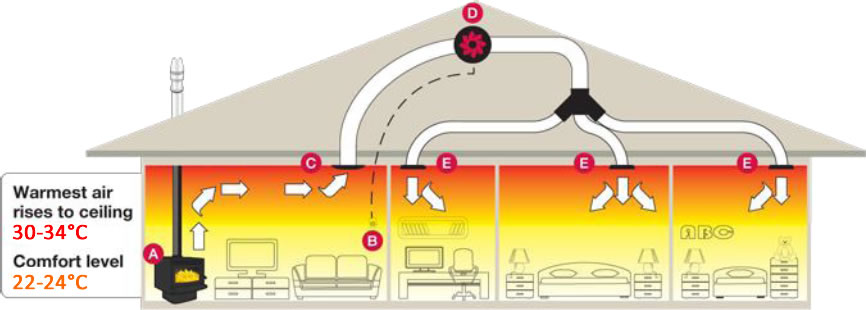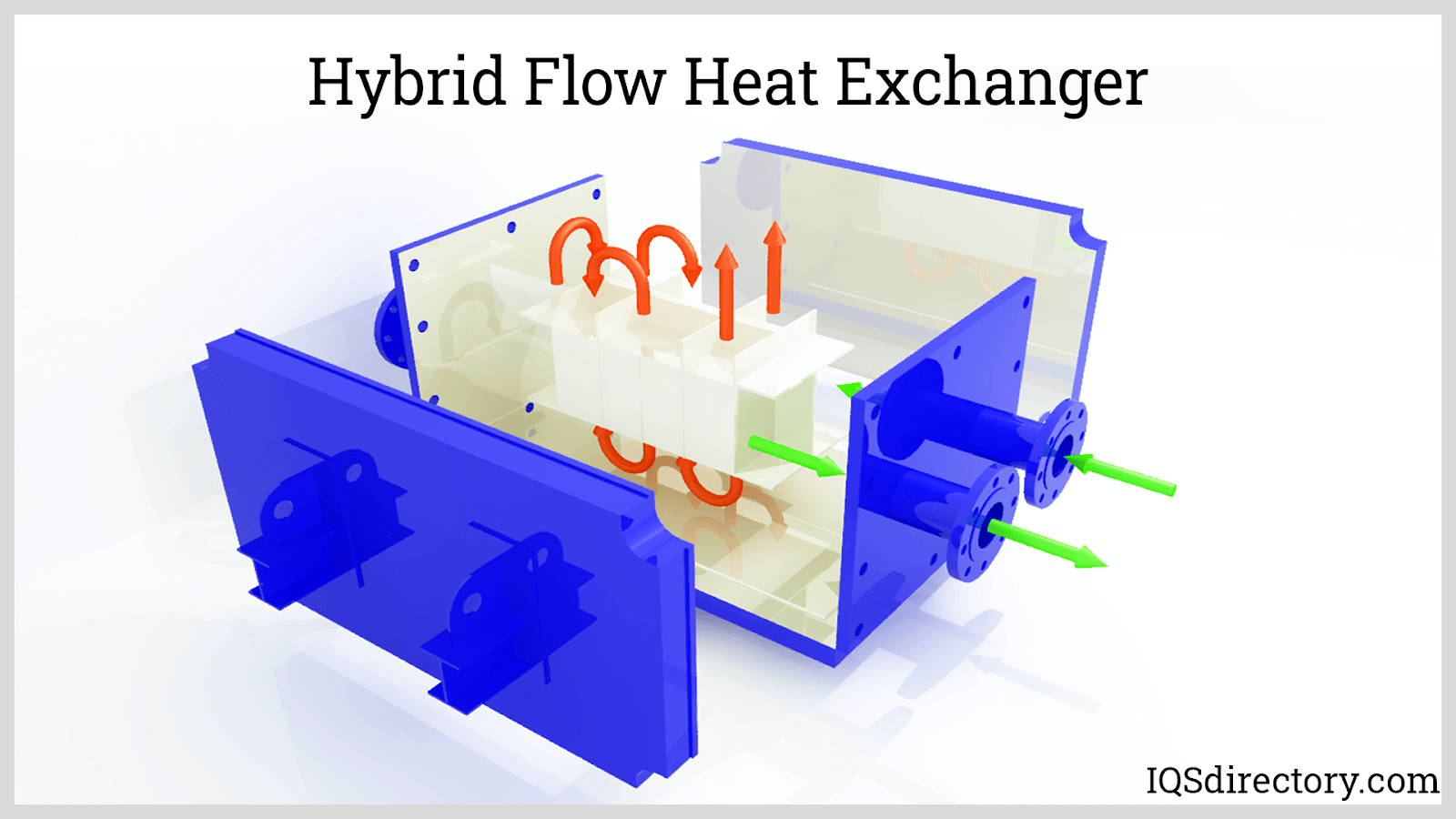Live Data Feedback: How DVS Heat Transfer Systems Enable Predictive Maintenance
Wiki Article
Checking out the Benefits and Applications of Heat Transfer Equipments in Modern Market
Heat transfer systems play a necessary function in modern-day industry. They include different systems such as radiation, transmission, and convection, each contributing to effective thermal management. Industries like manufacturing and aerospace advantage greatly from these systems. As advancements continue, the assimilation of cutting-edge products and innovations promises to boost power effectiveness. This evolution elevates crucial concerns about the future implications for sustainability and functional expenses throughout several industries. What exists in advance in this recurring makeover?Comprehending Heat Transfer Concepts
Heat transfer concepts are essential to the operation of numerous industrial systems. These concepts include the systems of transmission, convection, and radiation, each playing a vital function in managing thermal energy. Recognizing conduction involves examining just how Heat relocates with solid materials, while convection relate to Heat transfer in liquids, driven by liquid motion. Radiation, unique from the other 2, includes power transfer via electromagnetic waves. The effectiveness of Heat transfer influences system performance, energy usage, and total efficiency. Reliable thermal management is crucial in procedures such as air conditioning, home heating, and Heat recuperation. By grasping these principles, sectors can optimize their operations, decrease power prices, and enhance devices durability, therefore adding to an extra effective and sustainable commercial landscape.Trick Kinds Of Heat Transfer Systems
While various markets use Heat transfer systems for diverse applications, numerous vital kinds stand out because of their certain features and performances. One of the most common types include conduction, radiation, and convection systems. Conduction systems transfer Heat through direct contact between materials, making them reliable in solid-state applications. Convection systems, on the various other hand, make use of fluid motion to transfer Heat, appropriate for heating or cooling down fluids and gases. Radiation systems run without a tool, depending on electro-magnetic waves to transfer Heat, suitable for high-temperature atmospheres. Each type serves distinct objectives, enabling markets to tailor their Heat transfer services based on functional requirements, power effectiveness, and cost-effectiveness. Understanding these systems is important for optimizing efficiency in numerous commercial settings.Industrial Applications of Heat Transfer Technologies
The application of Heat transfer modern technologies in market plays a vital role in boosting energy efficiency and maximizing processes. DVS Heat Transfer Systems. By implementing sophisticated Heat exchange systems, firms can considerably reduce their ecological impact while enhancing overall performance. This integration not just promotes sustainability but also lines up with contemporary regulative and consumer demands for greener methodsEnergy Performance Improvements
As industries significantly prioritize sustainability, energy effectiveness improvements in Heat transfer technologies have come to be necessary for decreasing functional expenses and ecological impact. Boosted Heat exchangers, for example, make use of advanced products and designs to make the most of thermal efficiency while minimizing energy intake. Incorporating variable speed drives in pumping systems enables for far better control of liquid flow, leading to considerable power financial savings. The implementation of wise sensors and automation gives real-time monitoring, allowing changes that optimize energy use. Furthermore, waste Heat healing systems catch excess thermal power, transforming it right into useful power. These developments not only boost power efficiency but also add to a much more sustainable industrial landscape by reducing greenhouse gas exhausts and supporting compliance with environmental regulations.Process Optimization Techniques
Process optimization techniques are vital in improving the effectiveness and effectiveness of Heat transfer innovations in industrial applications. These techniques involve refining processes to optimize Heat transfer efficiency while lessening power intake and operational expenses. Approaches such as computational fluid dynamics (CFD) modeling permit designers to analyze and mimic Heat transfer situations, determining locations for renovation. Furthermore, real-time monitoring systems can provide useful information on temperature gradients and circulation rates, making it possible for changes that optimize efficiency. In addition, carrying out innovative control approaches, such as predictive analytics, can enhance system responsiveness to differing functional demands. By using these optimization methods, markets can accomplish better thermal efficiency, lowered downtime, and enhanced item high quality, ultimately bring about boosted competitiveness in the market.
Environmental Effect Reduction
While industrial Heat transfer modern technologies are necessary for operational performance, their application likewise offers opportunities for substantial environmental impact decrease. By boosting power efficiency, these systems lessen gas consumption, causing reduced greenhouse gas emissions. Progressed Heat exchangers can recuperate waste Heat, redirecting it to preheat incoming fluids, therefore reducing energy requirements. On top of that, the combination of Heat transfer modern technologies in renewable energy systems, such as solar thermal and geothermal applications, sustains the change to lasting techniques. Industries that use these innovations additionally benefit from minimized functional costs and enhanced regulatory conformity. On the whole, the strategic implementation of Heat transfer systems not just strengthens efficiency however additionally fosters an extra lasting industrial landscape, adding to international environmental goals.Benefits of Reliable Heat Transfer Equipments
Reliable Heat transfer systems supply substantial benefits in modern-day industry, mostly via improved energy efficiency and cost reduction. By maximizing thermal monitoring, these systems lessen power waste, bring about reduced operational prices (DVS Heat Transfer Systems). Companies can achieve better sustainability and boosted earnings.
Power Efficiency Improvements
As markets significantly focus on sustainability and cost-effectiveness, power performance improvements in Heat transfer systems have become an essential emphasis. Improved performance in these systems results in reduced power usage, making it possible for centers to operate even more sustainably. By maximizing Heat transfer approaches, sectors can minimize waste Heat and achieve better thermal management, significantly lowering their environmental impact. Advancements in technologies such as Heat exchangers and insulation products contribute to improved efficiency and integrity. Executing energy-efficient Heat transfer solutions not just sustains compliance with regulative standards yet likewise promotes a culture of development within companies. Eventually, these improvements are necessary in lining up industrial operations with international power conservation goals, leading the way for an extra sustainable future in manufacturing and handling sectors.Price Reduction Opportunities
By maximizing Heat transfer systems, industries can reveal significant price reduction possibilities that improve their profits. Reliable Heat transfer minimizes energy usage, causing lower utility expenses and decreasing functional expenses. Furthermore, enhanced system performance lowers the requirement for upkeep and repair work, in addition conserving expenses over time. Improved Heat transfer can additionally prolong tools lifespan, enabling firms to delay capital investment on replacements. Moreover, waste Heat recovery systems can change excess Heat into functional power, further driving down expenses. These systems not just improve procedures yet also add to sustainability campaigns, positioning companies favorably in a significantly eco-conscious market. In general, the monetary advantages of reliable Heat transfer systems are necessary and significant for affordable benefit.Developments in Heat Transfer Solutions
Exactly how can contemporary sector enhance its operations with ingenious Heat transfer remedies? By taking on advanced materials and technologies, industries can this article considerably improve thermal effectiveness and performance. Developments such as nanofluids, which improve Heat transfer abilities past traditional liquids, and stage modification materials that keep and release thermal energy, are obtaining grip. In addition, the combination of wise sensors and IoT tools enables real-time surveillance and optimization of Heat transfer processes, minimizing waste and enhancing system responsiveness. In addition, additive manufacturing strategies make it possible for the creation of even more complex Heat exchangers that optimize surface location while minimizing material usage. Collectively, these innovations drive functional effectiveness and create competitive benefits in different sectors, consisting of power, manufacturing, and aerospace.The Role of Heat Transfer in Sustainability Efforts
While the promote sustainability continues to improve markets, the duty of Heat transfer modern technologies ends up use this link being increasingly necessary in achieving ecological goals. Efficient Heat transfer systems assist in power efficiency by maximizing thermal administration in numerous processes, substantially reducing energy consumption and greenhouse gas discharges. Advanced Heat exchangers are utilized in industrial applications to redeem waste Heat, thereby minimizing energy waste. In addition, developments such as phase adjustment materials enhance thermal storage, adding to renewable resource assimilation. The adoption of sustainable fluids in Heat transfer systems can minimize ecological influence. By prioritizing effective Heat transfer, markets not just boost functional efficiency yet also line up with international sustainability initiatives, cultivating a cleaner, extra lasting future.Frequently Asked Questions
How Do Heat Transfer Systems Impact Energy Prices in Manufacturing?
Heat transfer systems considerably affect energy costs in manufacturing by boosting performance, minimizing waste, and enhancing thermal monitoring. These renovations cause decrease functional expenses, ultimately profiting total performance and productivity in commercial operations.What Upkeep Is Required for Heat Transfer Equipments?
Upkeep for Heat transfer systems includes regular evaluations, cleaning of components, checking liquid degrees and conditions, replacing worn parts, and ensuring proper insulation. These activities enhance efficiency, expand life expectancy, and avoid costly failures in procedure.Are There Safety And Security Worries With Heat Transfer Systems?
Safety problems with Heat transfer systems consist of potential leakages, stress build-up, and thermal threats. Proper layout, regular upkeep, and adherence to safety and security procedures are important to mitigate these dangers and assure risk-free operation in commercial settings.
How Can I Select the Right Heat Transfer System for My Company?
Choosing the appropriate Heat transfer system includes evaluating variables such as efficiency, application needs, budget restrictions, and security criteria. An extensive evaluation of these components will aid guarantee suitable performance and dependability in service procedures.What Are Usual Failures in Heat Transfer Systems and Their Causes?

Recognizing transmission entails evaluating exactly how Heat moves through solid materials, while convection pertains to Heat transfer in liquids, driven by liquid activity. By maximizing Heat transfer approaches, industries can reduce i was reading this waste Heat and attain far better thermal administration, substantially decreasing their environmental influence. Waste Heat recovery systems can change excess Heat right into usable energy, additionally driving down prices. Advanced Heat exchangers are made use of in industrial applications to reclaim waste Heat, consequently decreasing energy waste. Common failures in Heat transfer systems include leaks, deterioration, and inefficient Heat exchange.
Report this wiki page